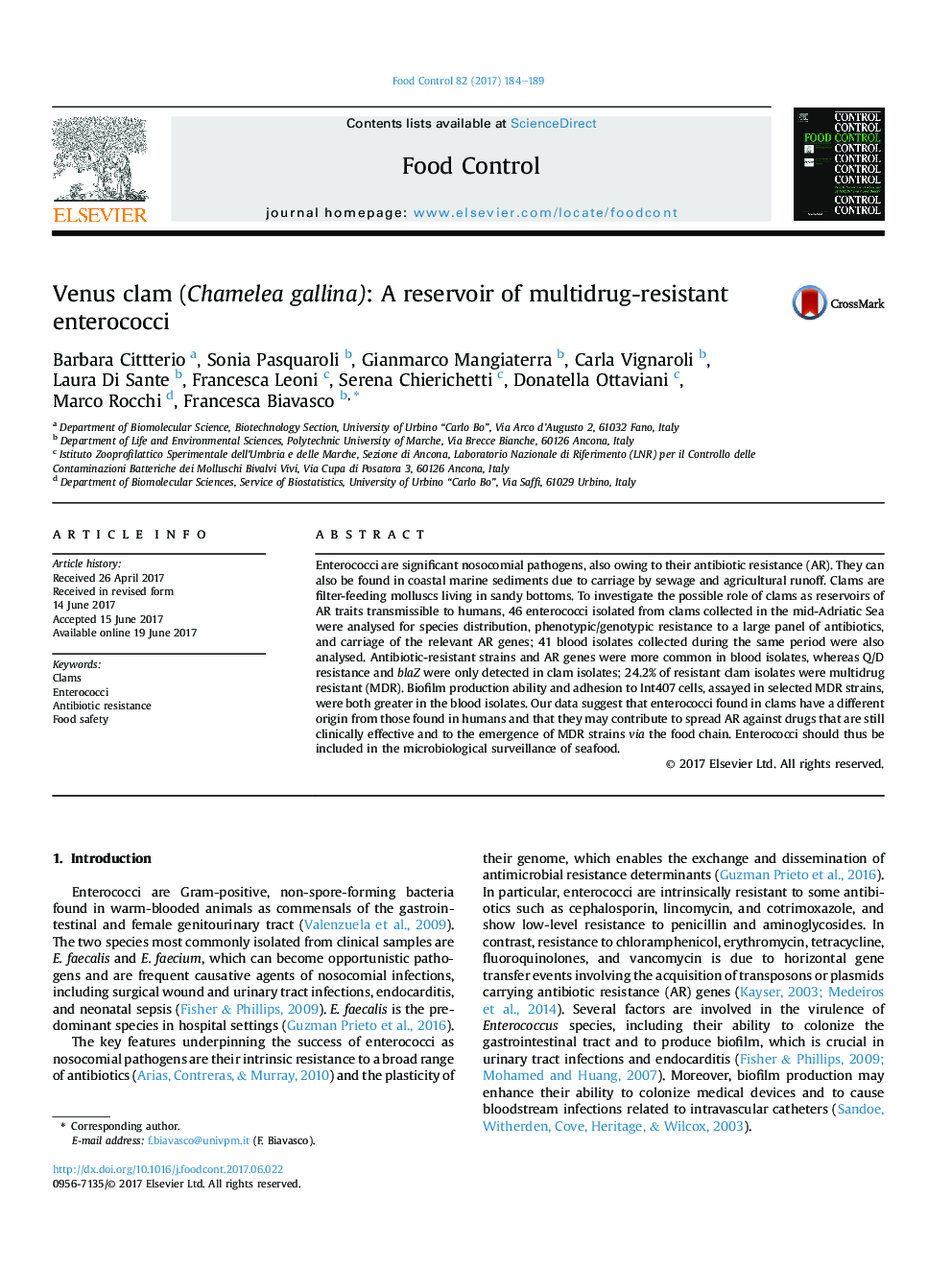| Article ID | Journal | Published Year | Pages | File Type |
|---|---|---|---|---|
| 5767148 | Food Control | 2017 | 6 Pages |
â¢Multidrug-resistant enterococcal strains were recovered from clams.â¢E. hirae and E. faecium isolates showed low daptomycin susceptibility.â¢Enterococci from clams showed a low prevalence of known resistance genes.â¢Antibiotic resistance can be spread through clams.
Enterococci are significant nosocomial pathogens, also owing to their antibiotic resistance (AR). They can also be found in coastal marine sediments due to carriage by sewage and agricultural runoff. Clams are filter-feeding molluscs living in sandy bottoms. To investigate the possible role of clams as reservoirs of AR traits transmissible to humans, 46 enterococci isolated from clams collected in the mid-Adriatic Sea were analysed for species distribution, phenotypic/genotypic resistance to a large panel of antibiotics, and carriage of the relevant AR genes; 41 blood isolates collected during the same period were also analysed. Antibiotic-resistant strains and AR genes were more common in blood isolates, whereas Q/D resistance and blaZ were only detected in clam isolates; 24.2% of resistant clam isolates were multidrug resistant (MDR). Biofilm production ability and adhesion to Int407Â cells, assayed in selected MDR strains, were both greater in the blood isolates. Our data suggest that enterococci found in clams have a different origin from those found in humans and that they may contribute to spread AR against drugs that are still clinically effective and to the emergence of MDR strains via the food chain. Enterococci should thus be included in the microbiological surveillance of seafood.
